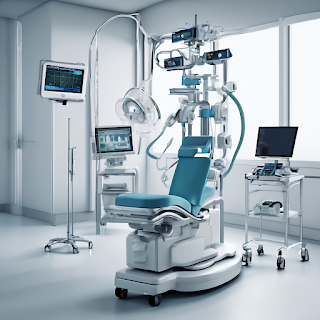Introduction to China’s Medical Sector Reforms
China has long been recognized as a global economic powerhouse, but its healthcare industry is rapidly becoming one of the most attractive sectors for foreign investment. Recent reforms have opened doors for foreign ownership and investment in medical manufacturing and services, presenting significant opportunities for international businesses. In this article, we explore the key changes in China’s medical sector and the implications for foreign stakeholders.
Key Drivers of Growth in China’s Medical Sector
Aging Population and Increased Demand for Healthcare
China’s aging population, driven by longer life expectancy and declining birth rates, is fueling demand for healthcare services and products. By 2050, it is estimated that 330 million people in China will be over the age of 65, placing immense pressure on the healthcare system. This demographic shift has accelerated the need for better healthcare infrastructure, medical technologies, and specialized care, creating a fertile ground for foreign investments.
Technological Advancements and Innovation
Technological innovation is transforming China’s healthcare landscape. The integration of artificial intelligence (AI), big data, and telemedicine is streamlining medical processes, enhancing diagnostic capabilities, and improving patient outcomes. Foreign companies with cutting-edge technology and expertise in medical equipment manufacturing, digital health platforms, and pharmaceutical innovations stand to benefit greatly from these advancements.
Policy Reforms and Foreign Investment Incentives
Opening of the Medical Manufacturing Sector
The Chinese government’s decision to relax restrictions on foreign ownership in the medical manufacturing sector marks a significant policy shift. Previously, foreign companies were required to partner with domestic firms through joint ventures, but new regulations now allow 100% foreign ownership in key areas such as the production of medical devices, pharmaceuticals, and healthcare equipment. This move aims to boost the competitiveness of China’s healthcare industry while ensuring that the market remains open to high-quality foreign products.
Liberalization of Healthcare Services
Beyond manufacturing, China has also opened its healthcare services sector to foreign investment. International healthcare providers can now establish wholly foreign-owned hospitals and clinics in specific regions, catering to the growing demand for high-quality medical care. This reform has attracted global hospital chains, private healthcare providers, and specialized medical service companies looking to expand their footprint in China’s lucrative healthcare market.
Foreign Investment Opportunities in Medical Equipment and Pharmaceuticals
Medical Devices and Diagnostics
The global market for medical devices is projected to reach $612 billion by 2025, and China is playing a crucial role in this growth. Foreign companies specializing in medical devices, particularly in diagnostics, imaging, and minimally invasive surgery, have a unique opportunity to tap into China’s expanding market. Chinese hospitals and clinics are investing heavily in advanced medical technologies to improve patient care and reduce dependency on outdated equipment.
Pharmaceutical Research and Development (R&D)
The Chinese government has identified pharmaceutical R&D as a priority area for foreign investment. With a growing middle class and rising healthcare expenditures, there is increasing demand for innovative drugs and treatments. Foreign pharmaceutical companies that specialize in biotechnology, oncology, and chronic disease management are particularly well-positioned to enter the Chinese market. Recent policy initiatives, such as the expedited approval process for new drugs, further enhance the attractiveness of China’s pharmaceutical sector for international investors.
Challenges and Considerations for Foreign Investors
Regulatory Compliance and Market Entry
While China has made significant strides in opening its medical sector to foreign investors, navigating the regulatory landscape remains a complex task. Compliance with China’s stringent healthcare regulations, including those related to product safety, clinical trials, and intellectual property protection, is essential for success. Foreign companies should work closely with local experts and legal advisors to ensure they meet all necessary requirements.
Competition from Domestic Players
China’s domestic healthcare companies are rapidly evolving and becoming formidable competitors in the global market. Foreign investors must be prepared to face competition from well-established local firms that benefit from government support and a deep understanding of the local market. Developing strategic partnerships with local companies or acquiring existing players can be an effective way to gain a competitive edge.
Future Outlook: A Bright Horizon for Foreign Investment
China’s medical sector is poised for continued growth, driven by demographic changes, technological advancements, and favorable government policies. The opening of the market to foreign ownership and investment presents unprecedented opportunities for international companies. However, success in China’s healthcare industry requires a deep understanding of the local market dynamics, regulatory environment, and competitive landscape. By capitalizing on these opportunities and navigating the challenges effectively, foreign investors can play a key role in shaping the future of China’s healthcare system.
Conclusion
As China continues to reform and expand its healthcare system, the medical sector offers a wealth of opportunities for foreign ownership and investment. With the right strategies and an understanding of the local market, foreign companies can significantly contribute to the growth and innovation of China’s medical industry, while benefiting from one of the world’s largest healthcare markets.

